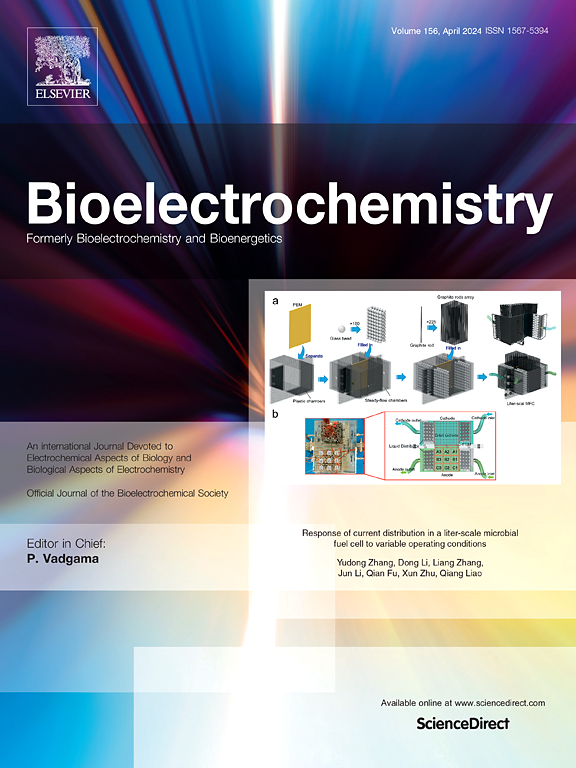Rapid bacterial detection through microfluidic integration with a glucometer
IF 4.8
2区 化学
Q1 BIOCHEMISTRY & MOLECULAR BIOLOGY
引用次数: 0
Abstract
We present a novel approach for sensitive and portable detection of pathogenic bacteria, which is crucial for household and clinical practice. Our method employs immunoliposomes, antibodies, and microchip to detect specific pathogens quantitatively. Gold and metal metal–organic nanoparticles and liposomes were characterized using high-resolution techniques like TEM and SEM. Utilizing a commercial, personal glucose meter (PGM), we initially detected released glucose from antibody-modified liposomes and microchips with MOF-NPs. Detection on the microchip was achieved within 30 min, while the PGM analysis took only one minute for targeted bacteria, yielding glucose signals of 66 mg/dL and 69 mg/dL, respectively. Serial dilutions with group A-Streptococcus pyogenes (GAS) (1.4 × 10^4–1.4 × 10^8 CFU/mL) demonstrated quantitative measurement applicability. This innovative approach and a portable PGM hold promise for various industries, including physician labs, hospitals, and households.
微流控集成血糖仪快速细菌检测
我们提出了一种新的方法,用于敏感和便携式检测致病菌,这是至关重要的家庭和临床实践。我们的方法采用免疫脂质体、抗体和微芯片定量检测特定病原体。利用TEM和SEM等高分辨率技术对金、金属有机纳米粒子和脂质体进行了表征。利用商业化的个人血糖仪(PGM),我们首先检测了抗体修饰脂质体和带有MOF-NPs的微芯片中释放的葡萄糖。微芯片上的检测在30分钟内完成,而PGM分析对目标细菌只需要1分钟,分别产生66 mg/dL和69 mg/dL的葡萄糖信号。a群化脓性链球菌(GAS)连续稀释(1.4 × 10^ 4-1.4 × 10^8 CFU/mL)证明了定量测量的适用性。这种创新的方法和便携式PGM有望应用于各种行业,包括医生实验室、医院和家庭。
本文章由计算机程序翻译,如有差异,请以英文原文为准。
求助全文
约1分钟内获得全文
求助全文
来源期刊

Bioelectrochemistry
生物-电化学
CiteScore
9.10
自引率
6.00%
发文量
238
审稿时长
38 days
期刊介绍:
An International Journal Devoted to Electrochemical Aspects of Biology and Biological Aspects of Electrochemistry
Bioelectrochemistry is an international journal devoted to electrochemical principles in biology and biological aspects of electrochemistry. It publishes experimental and theoretical papers dealing with the electrochemical aspects of:
• Electrified interfaces (electric double layers, adsorption, electron transfer, protein electrochemistry, basic principles of biosensors, biosensor interfaces and bio-nanosensor design and construction.
• Electric and magnetic field effects (field-dependent processes, field interactions with molecules, intramolecular field effects, sensory systems for electric and magnetic fields, molecular and cellular mechanisms)
• Bioenergetics and signal transduction (energy conversion, photosynthetic and visual membranes)
• Biomembranes and model membranes (thermodynamics and mechanics, membrane transport, electroporation, fusion and insertion)
• Electrochemical applications in medicine and biotechnology (drug delivery and gene transfer to cells and tissues, iontophoresis, skin electroporation, injury and repair).
• Organization and use of arrays in-vitro and in-vivo, including as part of feedback control.
• Electrochemical interrogation of biofilms as generated by microorganisms and tissue reaction associated with medical implants.
 求助内容:
求助内容: 应助结果提醒方式:
应助结果提醒方式:


